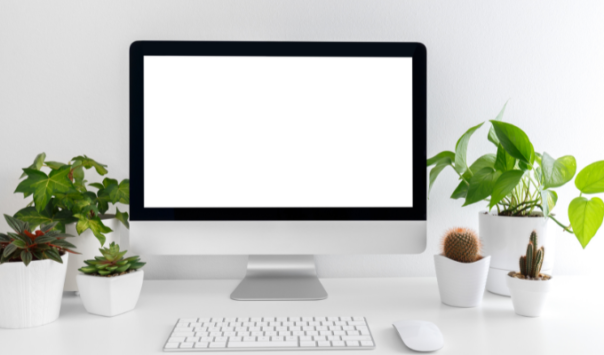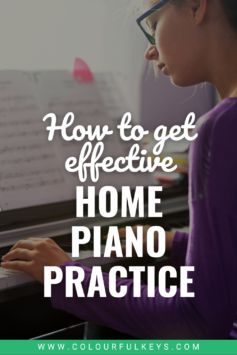It’s one of the givens of piano lessons. Whether we do it in an app, on a sticky note, in a notebook or in a beautiful page we put in a folder – most of us write piano practice assignments and notes for our students.

I’ve done it since I first started teaching as a teenager. Just like most things back then, I did it the way my teacher did. So, I asked the parents to get the student a notebook and each week I diligently wrote the date and then made notes on what we did and what they were supposed to do during the week.
Did they read it?
Nope, almost never.
Did I know they didn’t read it?
Yeah, I’m pretty sure I did. I can’t remember thinking about it too much. But if I did, I would’ve guessed they didn’t read those notes. Because I never read mine as a student.

‘Fess up. Did you read yours?
Maybe you did. I’d say the folks who became music teachers skew heavily towards those who did do things like read their practice assignment notes. 🤩
But – and I don’t think this will be news to you – most students don’t read the notes. I would even say, statistically (and I mean no offence here), most of your students probably don’t read them.
So why do we write them? Would I have been better taking that notebook with me each week and just using it for my own notes about my students’ lessons?
Assignment Notes for Piano Teachers
I know some piano teachers take a photo of their students’ practice notes so they have it to refer to later. Many make their own separate notes after the lesson so they can plan for the next one.
For a while, I created my assignment sheets in advance so that I had a digital copy to refer to later. That system worked pretty well.
But then the pandemic forced me strongly encouraged me to start using a practice app.
Now, piano practice assignments are not lesson plans. But they do help when you’re planning your lessons – especially when you’re not a teenager with 7 students, but instead running a studio with 30 students or even a school with hundreds.
And I think we’re more likely to read them than our students, anyway. 🙈
Benefits of Digital Assignments
I’m not going to tell you that you MUST use a practice app or management system. Yep, we have our own, Vivid Practice, and I think it’s great. But I will ask you to strongly consider going digital.

If something like Vivid Practice just isn’t your jam, maybe you use Google Docs or the “notes” function in My Music Staff. Regardless of the vehicle, digital really has so many advantages over handwriting:
- It’s easier for students to read (even if your handwriting isn’t the scrawly mess mine is!)
- Most people type faster than they handwrite, so it’s probably less time consuming for you too.
- You can check anything you need to check in between lessons. And unless you either have an eidetic memory or don’t prepare anything for lessons ever – that’s a huge advantage.
- You can format it better to make it child-friendly.
Using an app like Vivid Practice takes this even further as you can set up assignments ahead of time with audio, video or PDF attachments. And you can assign them to your students in a couple of clicks. But even if it’s in Google Docs, at least you can copy/paste!
Getting Piano Students to Read Practice Notes
So we just use a practice app, right? Then our students will magically read all our practice assignment notes in detail? I think you know me better than that. I’m not gonna lie to you. 🩲 🔥
Just as it takes effort to cultivate our students’ practice habits, we need to put in some work to get them used to whatever practice system we choose.
If This, Then That
The best route to developing any habit is to tie it to something that’s already in the routine. I talk about this in my book for parents, ‘Practice Pie’, and I have many conversations about this with new parents in our studio.
While you’re building this fledgling practice habit, it needs to include the idea that the first step of practice is checking the notes. In other words, “If it’s time to practice, then I need to open my practice app.” (The hidden PS in that is this: If you didn’t open the app, you’re not practising.)
The reminders we have in Vivid Practice help with this. But no matter what system you’re using, it needs to go along with practice like popcorn goes with the cinema.
||: Follow Up :||
You must be persistent! At the first lesson of every year, I ask students to bring the device they’re using the practice app on. We then do a little demo in their lesson. I open the app on my phone and ask them to do the same on their device. Then, together, we tap Practice, then Blocked, and we practise checking the notes for assignments, playing audio tracks and videos and then checking items off the list.

The next week, I don’t ask them to bring their device. But I do take out my phone again and ask them to show me how they practised this week. Of course, I already know which practice mode they chose or whether they did none at all ‘cause I can see their practice statistics in my teacher dashboard. This just gives us an opening for the conversation.
Then I ask more briefly at the next lesson, and again, and again. You get the idea. I become a dog with a bone and they get the message that this is an important part of practice.
Psst! Even if you insist on using a notebook or folder, you could still try this. Being persistent and explicit can do more than you think.
Make Your Notes Kid-Friendly
I’m sorry, but no child is going to read your essay about the origins of the waltz. If you’re teaching very dedicated advanced students who you know will read more in-depth notes, then please, go ahead. But if you’re teaching “regular” students then simple is best.

Try to cut your notes down to the minimum amount of words, and consider using bulleted lists and emojis to get your message across. 🏀 🖐🏽 🍓
I try to make my notes reminders of things we covered in the lesson, rather than adding anything extra. I’m also careful to use the language my students use. I make a habit of asking my students to describe what they need to do in their practice and then I write their words directly into the assignment notes. This makes for some interesting turns of phrase, but these are their notes after all, right?

Do your piano students read their practice notes?
What have you found that really gets them to follow through at home? I’d love to hear your experience in the comments below. ✍🏾
Thanks for getting me to reflect on this topic. Twice now, I have asked a certain student to show me his home practice routine. What an eye opener! If Mom has promised a ‘prize’ for his practicing and there’s music in his binder and a tab marking his spot in his lesson book, he looks at those and then throws caution to the wind and ‘plays’ them – cementing many mistakes (insert face palm here) before his next lesson. Sigh. Maybe it will help him if I use emojis and key words on each page of music instead of carefully writing it all out in his binder.
Oh my! I’ve had students very similar, Juli! I hope the emojis and keywords help:)